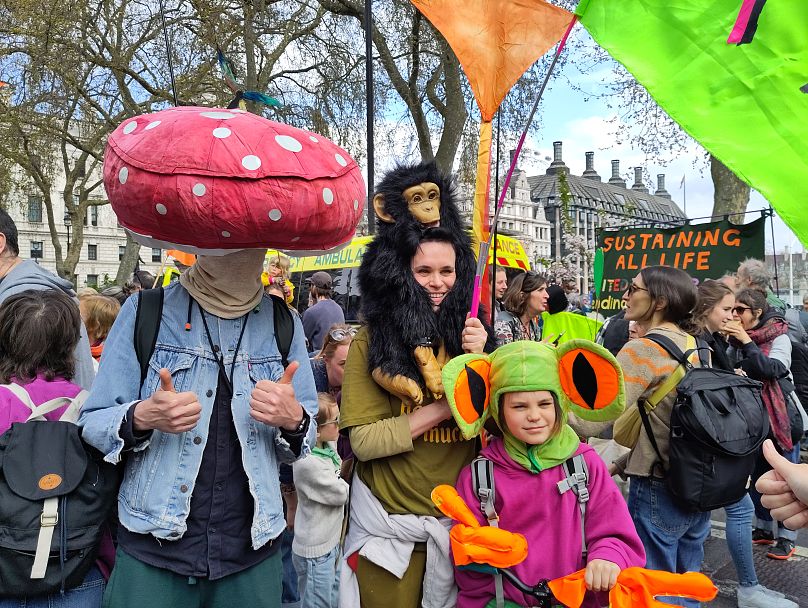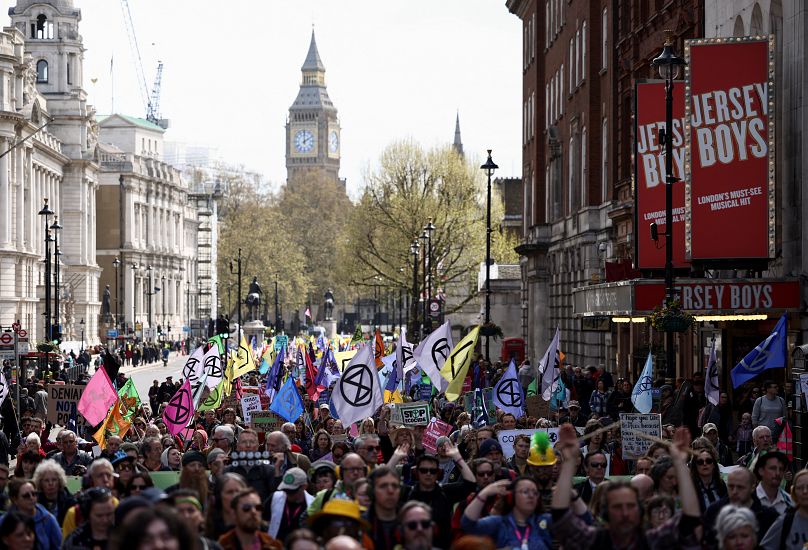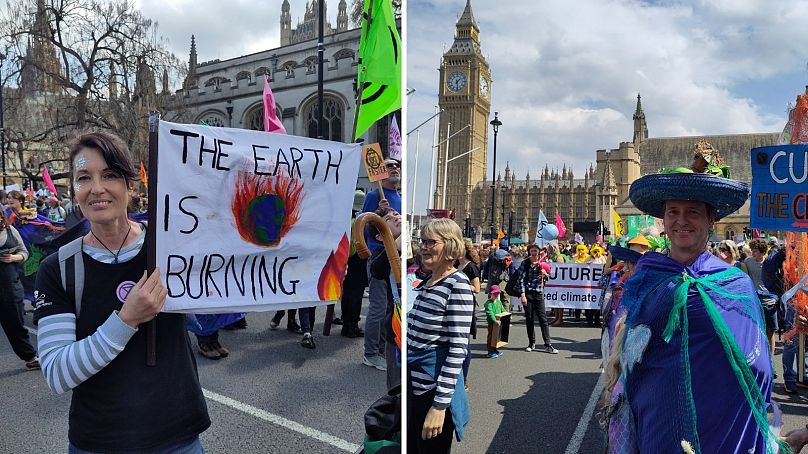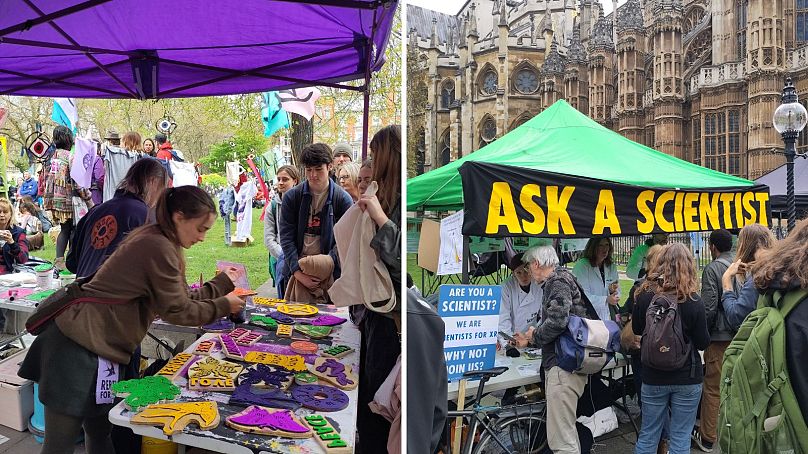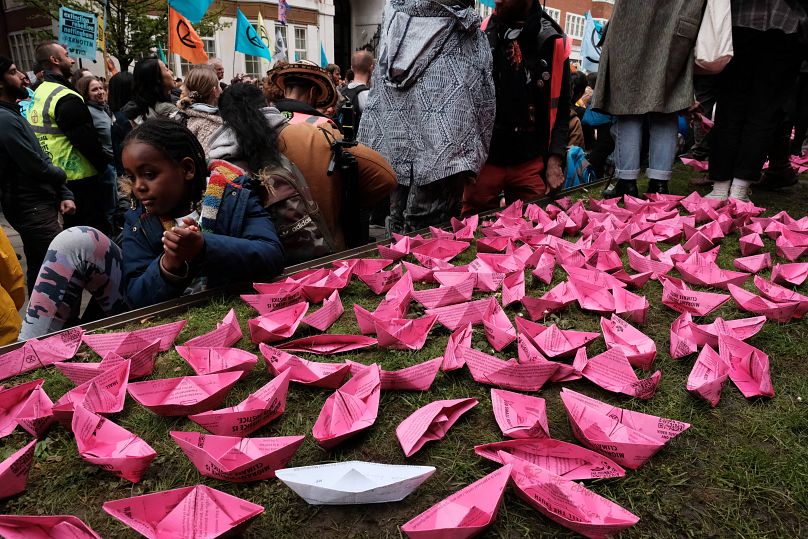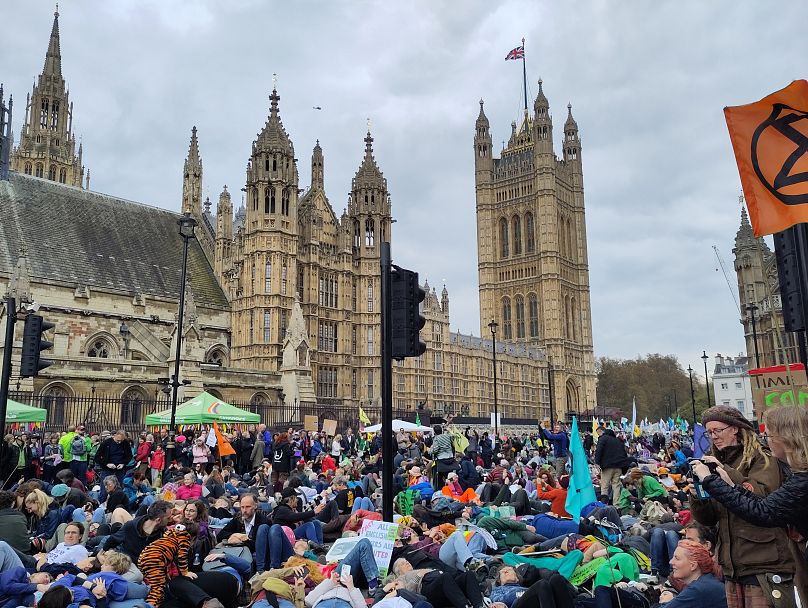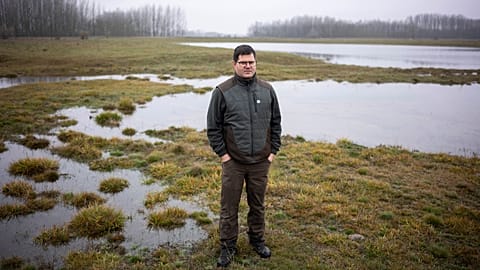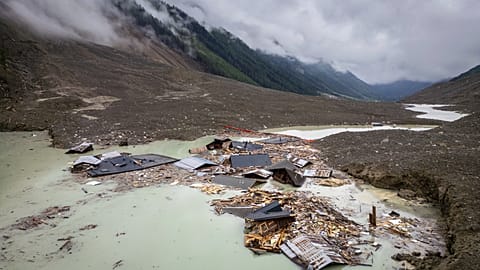Extinction Rebellion UK has vowed to 'step up' its campaigns, after the government failed to meet protesters' climate demands.
“Mummy, who’s Pedro?” a small child draped in ladybird wings asks.
We’re in sight of the Palace of Westminster in London, on the home stretch of 'The Big One'’s biodiversity march on Earth Day. Extinction Rebellion drummers keep a powerful beat as the crowd - tens of thousands of people attended the event on Saturday - wait to move forward.
His mother looks at the sign, featuring popular actor Pedro Pascal below a burning Earth and some words of warning: “The planet is getting hotter than Pedro!” She gives a brief explanation, adding that “hot” means people think he’s attractive. Satisfied that Pedro is safe, they march on.
XR tried something new this weekend. They partnered up with 200 other organisations, using strength in numbers to draw attention to the overlapping crises - racial, financial and social - that are all connected to the climate and ecological crisis we are living through.
Whether or not The Big One results in the government action it demands - ending fossil fuel licensing and creating emergency citizens’ assemblies - remains to be seen.
But there’s no doubt that the long weekend lived up to its inclusive and family-friendly promise.
“The atmosphere is incredible, there are children here, families, all walks of life, doctors, scientists, trade unionists…” protester Sally Bunce told Euronews Green. “Everyone’s just coming together and it's like a carnival, it’s a celebration of this planet.”
We spoke to people about what brought them to the streets of Parliament. And - since the government missed yesterday's 5pm ultimatum - asked XR organisers what happens next.
How did Extinction Rebellion get families involved?
Leanne travelled from Suffolk with her partner Alex and nine-year-old daughter Echo to be at the march. It’s not always easy to protest as a family, she says, “but what’s really nice about this event is the amount of preparation up front and all of the information that's been handed out.”
There’s been opportunities for children to learn, she adds, and “just to see the critical mass of everybody in one place is really uplifting more than anything.”
The UK is one of the most nature-depleted countries in the world, ranking 228th out of the 240 countries in the Biodiversity Intactness Index. To draw attention to this loss, protesters were invited to research and dress as a nonhuman, taking the time to see the world through their chosen animal, plant or microbe’s “eyes”.
Echo, who came dressed as a frog, says: “It's really good, there's loads and loads of people, lots of different animals around the world, and I think we will change the world today.”
The Big One: A broad coalition of environmental interests
Protesters converged on London from all corners of the UK on Saturday, bringing the plight of their local environments and species with them.
Sally Bunce, 53, represents Reclaim Our Sea - an organisation formed in the North East of England to protect inshore waters from dredging as a result of the Teesside Freeport.
The dredging, campaigners say, is resurfacing toxic chemicals that decades of industry laid in the mud sediment, leading to a ‘dead zone’ about 10 miles off the coast. This, claims Bunce, “has killed off the fishing industry, potentially will kill the tourism industry; but more so is killing our life-supporting seas.”
Nearby her brother Warren Bunce, 55, has come with his local Epsom XR group, joined together by a marine-themed costume. “We’re here because we think we’re not doing enough. We’re tinkering around the edges, and we need to act a lot faster,” he says.
Anita Andrews, 65, from the Suffolk coast walks beneath a marsh harrier bird model she made.
Back home, she’s an active campaigner against the building of Sizewell C, a nuclear power plant the government has approved. It's controversial for a number of reasons - from Anita’s point of view, because the proposed site backs on to a Site of Special Scientific Interest (SSSI) where marsh harriers live.
“It's great that so many people have turned out, and I hope that everybody coming together helps, because it's very easy to feel isolated about the things that you’re concerned about,” she says.
A ‘successful’ change in strategy
An emphasis on peaceful protesting brought strength in numbers.
XR organisers estimate that the total number of people who attended over the four days is more than 60,000, making it the biggest joint environmental protest in the UK after the 2019 climate strike.
Britain’s parliament became the first in the world to declare a climate emergency in May 2019, after days of protest by Extinction Rebellion brought parts of central London to a standstill. More than 300,000 people are estimated to have taken part in subsequent protests that September.
But some tactics have proved divisive, and the group has since struggled with its direction. The Big One is the first major event since XR UK’s new resolution to abandon disruptive tactics, prioritising “attendance over arrest" and "relationships over roadblocks".
“The real success of the weekend is the alliance we have built across 200 organisations, so we have a huge mass of people with us as we move forward,” an XR spokesperson says.
“XR have realised that not everybody wants to break the law,” says Sally Bunce. “So by using a non-disruptive method it gives more people the opportunity to join in and empower them to do things.
“I think it's a really really sound move that XR have made to open it up to everybody.”
What next for XR after The Big One?
The Big One had two key demands. Firstly, an end to the fossil fuel era - led by the government ceasing all new licences, approvals, and funding for fossil fuel projects.
Secondly, the creation of emergency citizens’ assemblies to facilitate fair, long-term solutions to the nation’s most urgent issues. Greenpeace UK, War on Want and Global Justice Now were among dozens of signatories.
The UK government missed its 5pm deadline to respond, and groups are escalating their activities as a result.
“Next we will reach out to supporter organisations to start creating a plan for stepping up our campaigns across an ecosystem of tactics that includes everyone from first-time protesters to those willing to go to prison,” said XR co-founder Clare Farrell.
Extinction Rebellion put forward three ‘pathways’ to Big One attendees. The results, captured via digital polling, show that 79 per cent of respondents support the third option of civil disobedience. It suggests that a range of new nonviolent direct actions are coming down the line.
91 per cent of protesters chose to organise locally, and 47 per cent opted to support picketing, building on the bond between workers and climate campaigners.
“This will be a vital form of solidarity that will confront those in power with our understanding that the health, transport and cost of living crises are all strands of the climate emergency,“ said XR’s Rob Callender.
“As well as our own pathways, stepping up will look different for each movement as they go away and decide how we can continue to work together,” an XR spokesperson told Euronews Green.
















